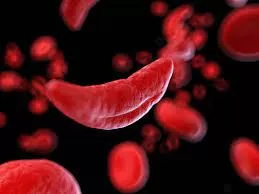A groundbreaking method developed by European universities promises a swift and accurate way to detect THC, the active compound in cannabis, using minimal saliva samples. This innovation could be a game-changer in the field of drug testing, simplifying traditional processes and providing a non-invasive, reliable means of analysis.
A Simplified Approach to Drug Testing
Researchers from the University of Cordoba’s FQM-215 group and the GICAPC group at the University of Valencia have collaborated to design a technique that reduces the steps involved in THC detection from five to just two. This new method employs mass spectrometry for rapid analysis, making it a significant advancement in drug testing technology.
Cannabis remains the most widely used illegal drug in Europe, with around 8% of adults having used it in 2022. The widespread use of cannabis presents health consequences and social problems, making a quick, simple, and reliable testing method essential.
Innovative Saliva-Based Analysis
To enhance the effectiveness of THC detection in small saliva samples, the research teams developed a dispersive microextraction technique using a miniaturized stirrer bar. Jaime Millán Santiago from UCO explains, “This technique involves adding a material capable of extracting the analytes in the sample, which has magnetic properties. A small magnet causes magnetic agitation, forming a vortex that disperses particles interacting with the analytes. When agitation stops, these particles are attracted back to the magnet, quickly extracting THC molecules from the saliva.”
Marisol Cárdenas, a professor at UCO, highlights the efficiency of the method: “We have reduced what would otherwise be five steps to just two.”
Streamlined THC Detection
Following the sample preparation, the next step involves transferring the miniaturized magnet, now coated with THC-trapping particles, to a needle. By applying high voltage and adding an organic solvent, the interaction between the extractant material and THC is disrupted, generating an electrospray that enters the mass spectrometer for analysis.
Professor Rafael Lucena emphasizes the practicality of this technology: “This method can already be incorporated into routine laboratory analysis, standing out for its sensitivity, precision, and accuracy.”
Collaborative Innovation
The success of this technology stems from the combined innovations of the Cordoba and Valencia teams. The University of Valencia designed the sample extraction and preparation step, while the University of Cordoba devised the analytical method.
Jaime Millán, one of the creators, elaborates, “We use stainless steel needles and leverage the non-metallic part of the needle to couple the magnet with THC. By using another external magnet to immobilize it, the solvent can flow and elute the analytes, which are then introduced into the analytical instrument as a spray.”
Reference
This innovative method is detailed in the research paper “Coupling Miniaturized Stir Bar Sorptive Dispersive Microextraction to Needle-Based Electrospray Ionization Emitters for Mass Spectrometry: Determination of Tetrahydrocannabinol in Human Saliva as a Proof of Concept,” authored by Andreu L. López-Juan, Jaime Millán-Santiago, Juan L. Benedé, Alberto Chisvert, Rafael Lucena, and Soledad Cárdenas, published on May 14, 2024, in Analytical Chemistry (DOI: 10.1021/acs.analchem.4c01297).












